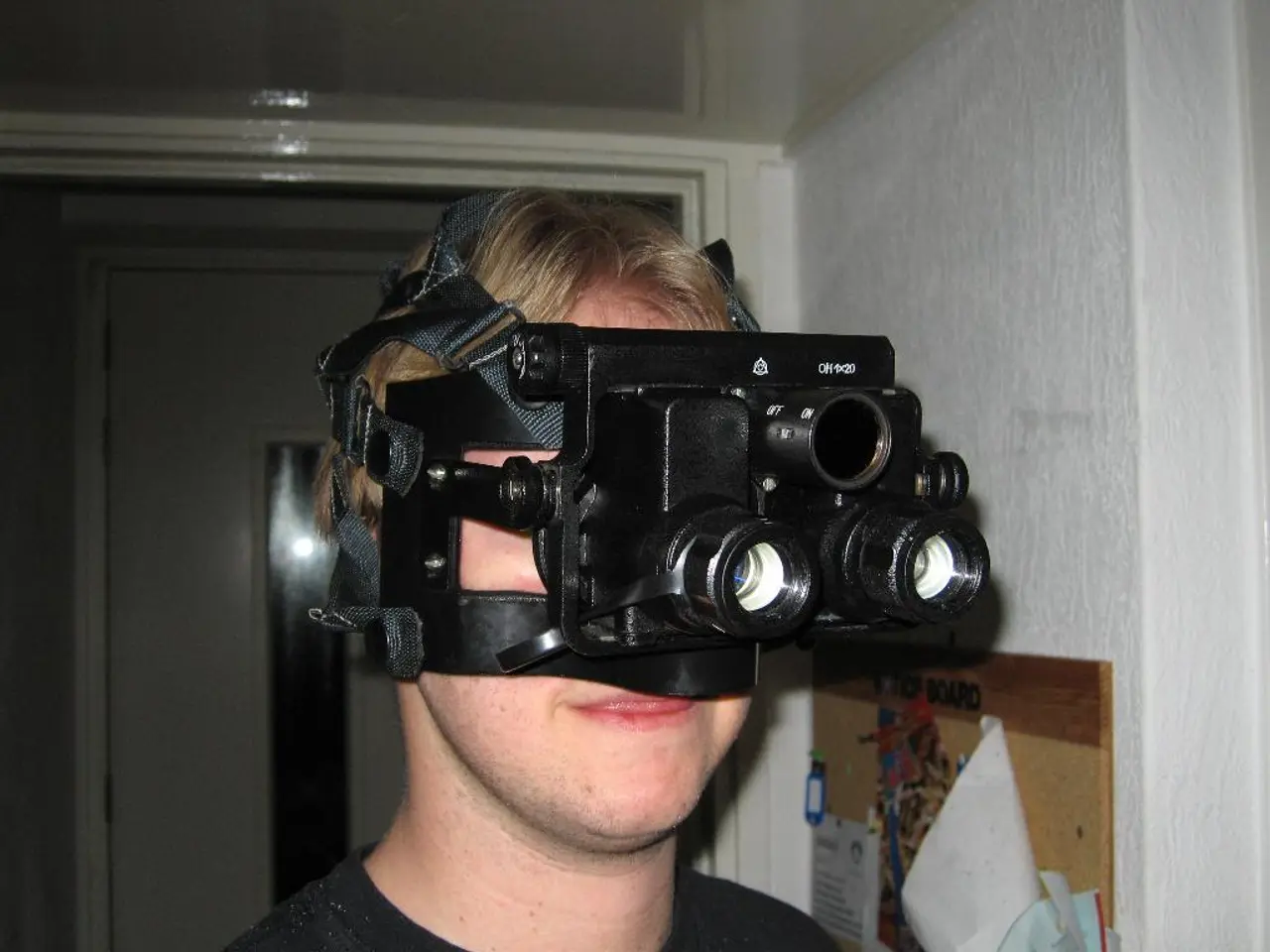Virtual Reality Creation: Unity against Unreal - Professional Analysis
In the realm of virtual reality (VR) development, two game engines stand out for their unique strengths and differences: Unity and Unreal Engine. These tools are essential for creating immersive and interactive experiences that captivate users and push the boundaries of VR technology.
Key Differences
The key differences between Unity and Unreal Engine for VR development revolve around ease of use, graphics quality, programming, cost, and hardware requirements.
Ease of Use
Unity is known for its beginner-friendly and intuitive interface, using C# scripting for programming. On the other hand, Unreal Engine has a steeper learning curve, utilizing Blueprint visual scripting and C++ for more advanced customization.
Graphics Quality
Unity offers good graphics capabilities for 2D/3D visuals, delivering decent VR experiences. Unreal Engine, however, boasts photorealistic, top-tier graphics with ray tracing support, making it ideal for high-fidelity VR experiences.
Performance
Unity's performance is moderate, requiring optimization for large VR projects. Unreal Engine offers high performance with built-in optimizations, better suited for complex scenes.
Cost
Unity offers a free tier and is affordable for small teams, while Unreal Engine is free to use but requires a 5% royalty on revenue after a certain threshold.
Hardware Needs
Unity runs well on mid-range hardware, while Unreal Engine demands high-end systems for optimal performance.
Scripting
Unity uses C# scripting, which is easier to learn and widely supported. Unreal Engine offers Blueprint visual scripting for non-coders and C++ for deep customization.
Community & Assets
Unity has a large community, extensive tutorials, and a vast asset store. Unreal Engine is growing its community and offers a high-quality marketplace.
Cross-Platform & VR Support
Unity provides strong cross-platform support, including VR/AR capabilities. Unreal Engine offers robust cross-platform support with advanced VR tools.
Source Code Access
Unity offers limited but extensible source code access, while Unreal Engine provides full source code access for deep customization.
Pros and Cons of Each Engine
Pros of Unity
- Easier learning curve, suitable for beginners and small teams.
- Flexible and versatile for mobile, desktop, and VR projects.
- Large community support and extensive tutorials.
- Efficient for projects prioritizing accessibility and faster prototyping.
- Good physics engine and C# scripting facilitate interactive gameplay mechanics.
Cons of Unity
- Graphics fidelity is lower compared to Unreal, less suited for ultra-realistic VR.
- May require more optimization for high-end VR experiences.
Pros of Unreal Engine
- Superior graphics rendering capable of photorealistic visuals ideal for immersive VR.
- Blueprint system allows non-programmers to design interactions quickly.
- Full C++ source access enables deep engine customization.
- Built-in multiplayer support and advanced VR-specific tools.
- Best for complex simulations and AAA-quality VR experiences.
Cons of Unreal Engine
- Steeper learning curve, potentially intimidating for new developers.
- Demands high-end hardware, not ideal for all developer setups.
- Royalty fees can increase costs for commercial projects.
Choosing the Right Engine for Your VR Project
When deciding between Unity and Unreal Engine for your VR project, consider the priorities of your project. If ease of use, accessibility, budget constraints, and cross-platform flexibility are key, Unity may be the better choice. If ultra-high fidelity graphics and sophisticated, realistic VR simulations are your focus, and you have the resources and expertise to handle complexity and hardware demands, Unreal Engine could be the ideal choice.
[1] Unity Documentation [2] Unreal Engine Documentation [3] Unity Asset Store [4] Unreal Engine Marketplace
- In VR development, Unity and Unreal Engine are the game engines that offer unique strengths and differences, essential for creating immersive, interactive experiences.
- The key differences between them revolve around ease of use, graphics quality, programming, cost, and hardware requirements.
- Unity is known for its easy-to-use interface and C# scripting, making it suitable for beginners and small teams.
- Unreal Engine has a steeper learning curve, utilizing Blueprint visual scripting and C++ for advanced customization.
- Unity offers decent graphics capabilities, while Unreal Engine boasts photorealistic, top-tier graphics with ray tracing support.
- In terms of performance, Unity requires optimization and Unreal Engine offers high performance with built-in optimizations.
- Unity's free tier makes it affordable for small teams, while Unreal Engine requires a 5% royalty on revenue after a certain threshold.
- Unity's moderate hardware requirements contrast with Unreal Engine's demand for high-end systems.
- Unity uses C# scripting, which is easier to learn and widely supported, while Unreal Engine offers Blueprint visual scripting and C++.
- Both game engines have large communities, extensive tutorials, and asset stores, although Unreal Engine's is growing.
- Unity provides strong cross-platform support, including VR/AR capabilities, while Unreal Engine offers robust cross-platform support with advanced VR tools.
- Unity offers limited but extensible source code access, while Unreal Engine provides full source code access for deep customization.
- Unity excels in accessibility, faster prototyping, and has a good physics engine for interactive gameplay mechanics.
- Unreal Engine is ideal for ultra-high fidelity graphics, complex simulations, and AAA-quality VR experiences, requiring high-end hardware and expertise for deep engine customization.




